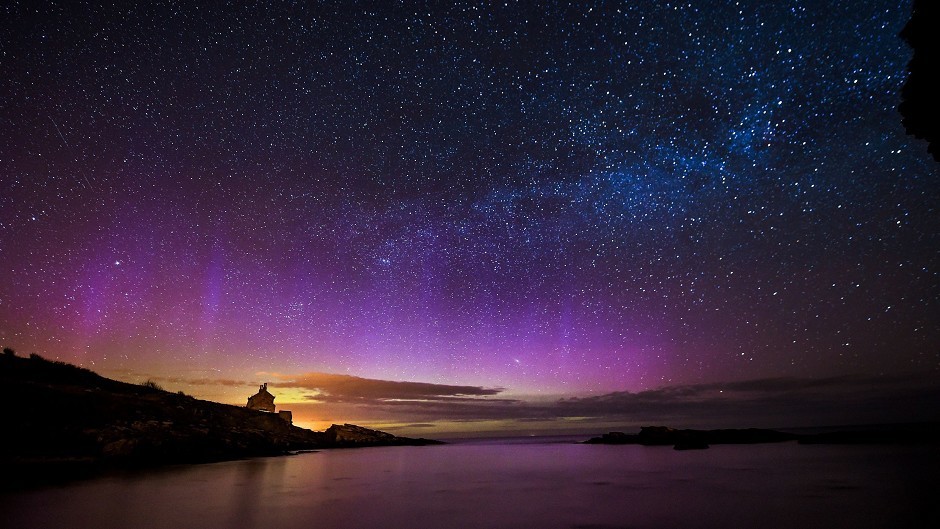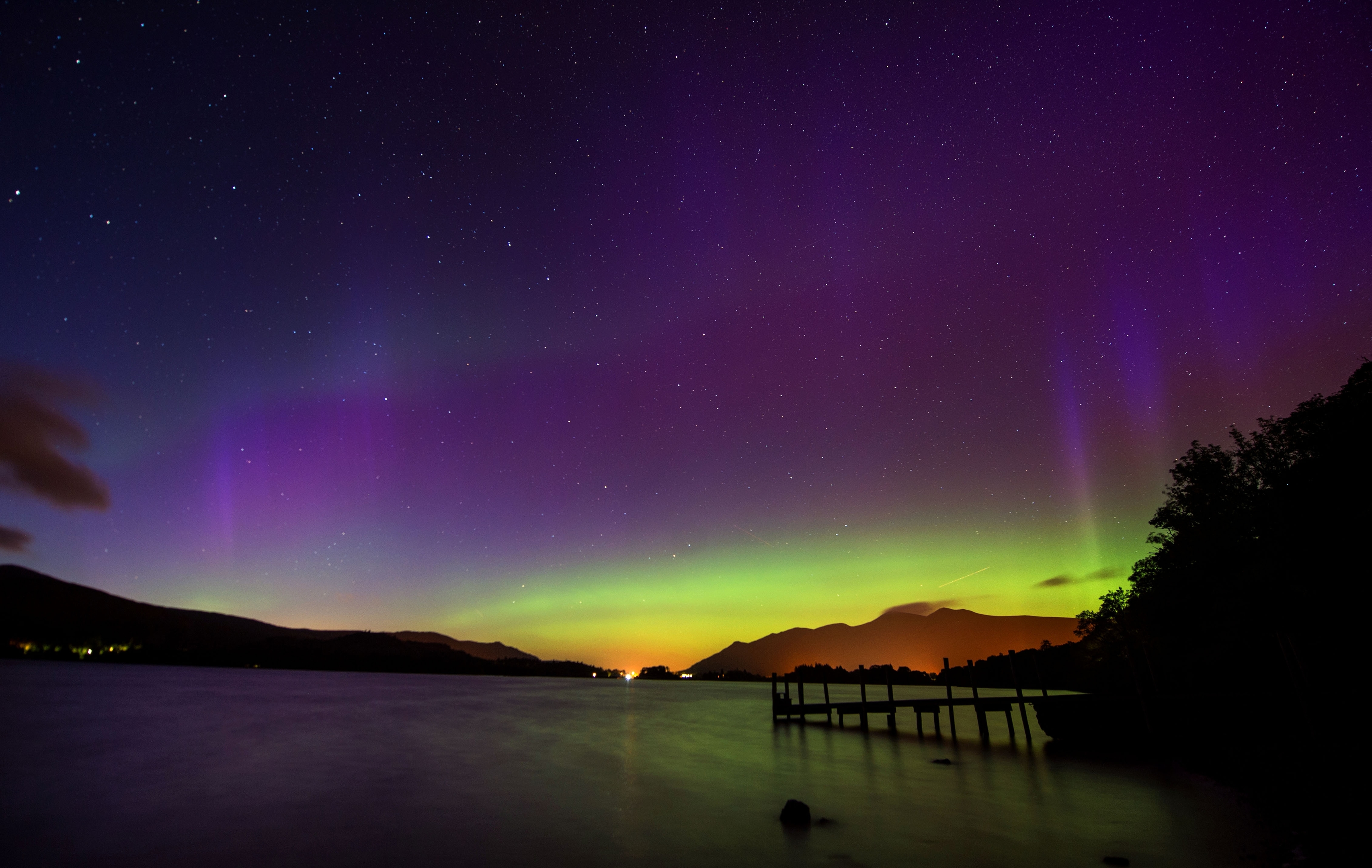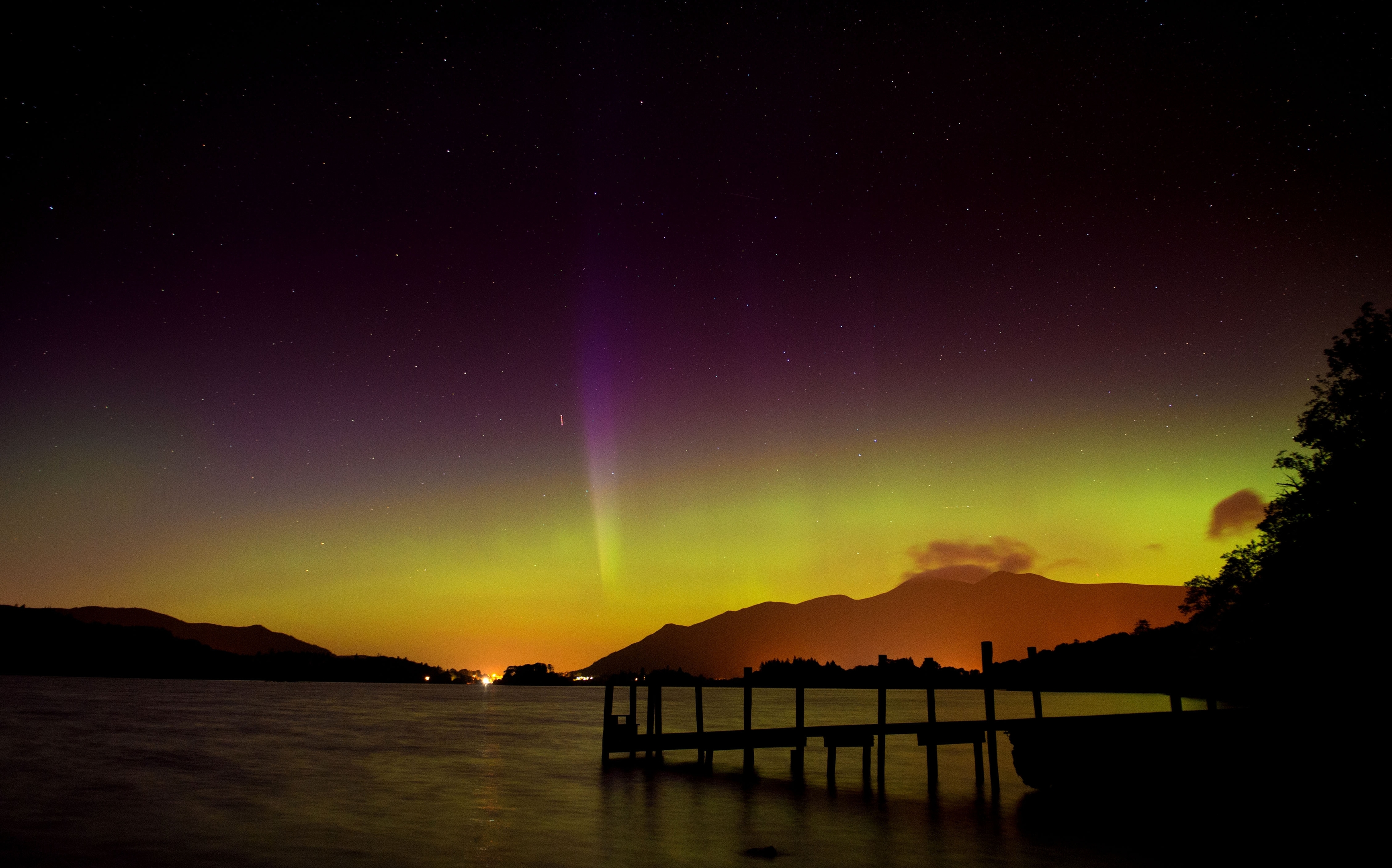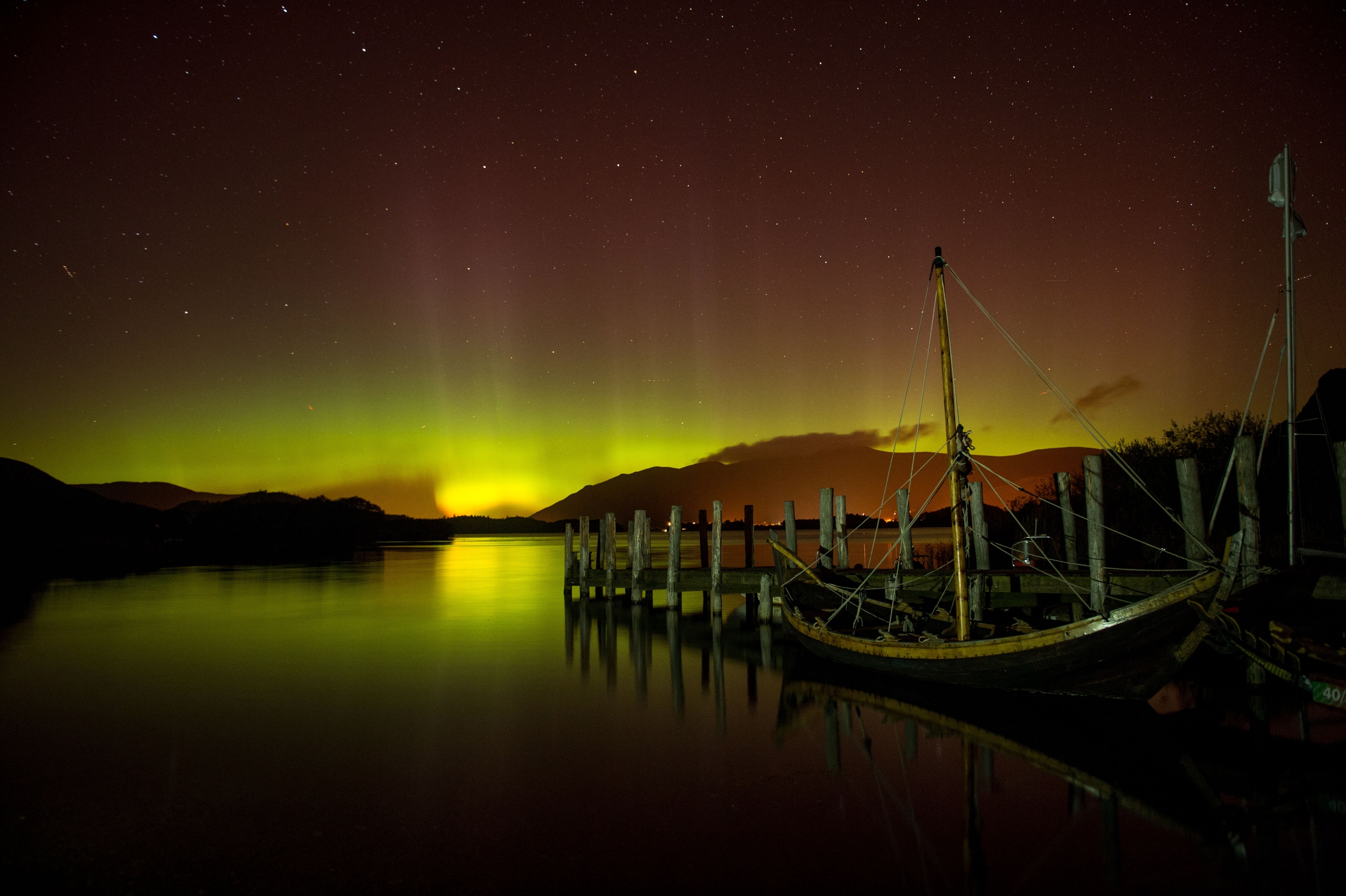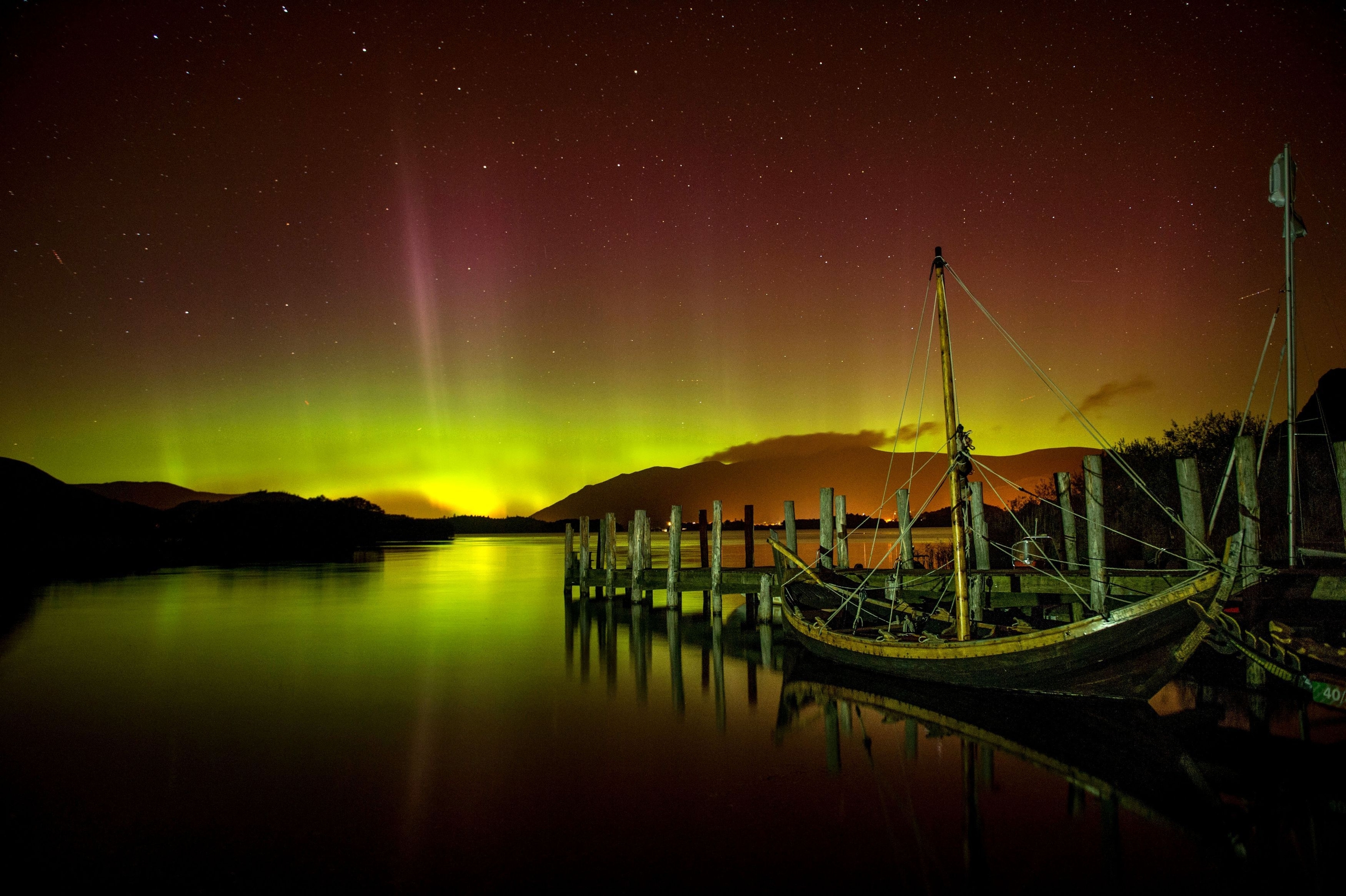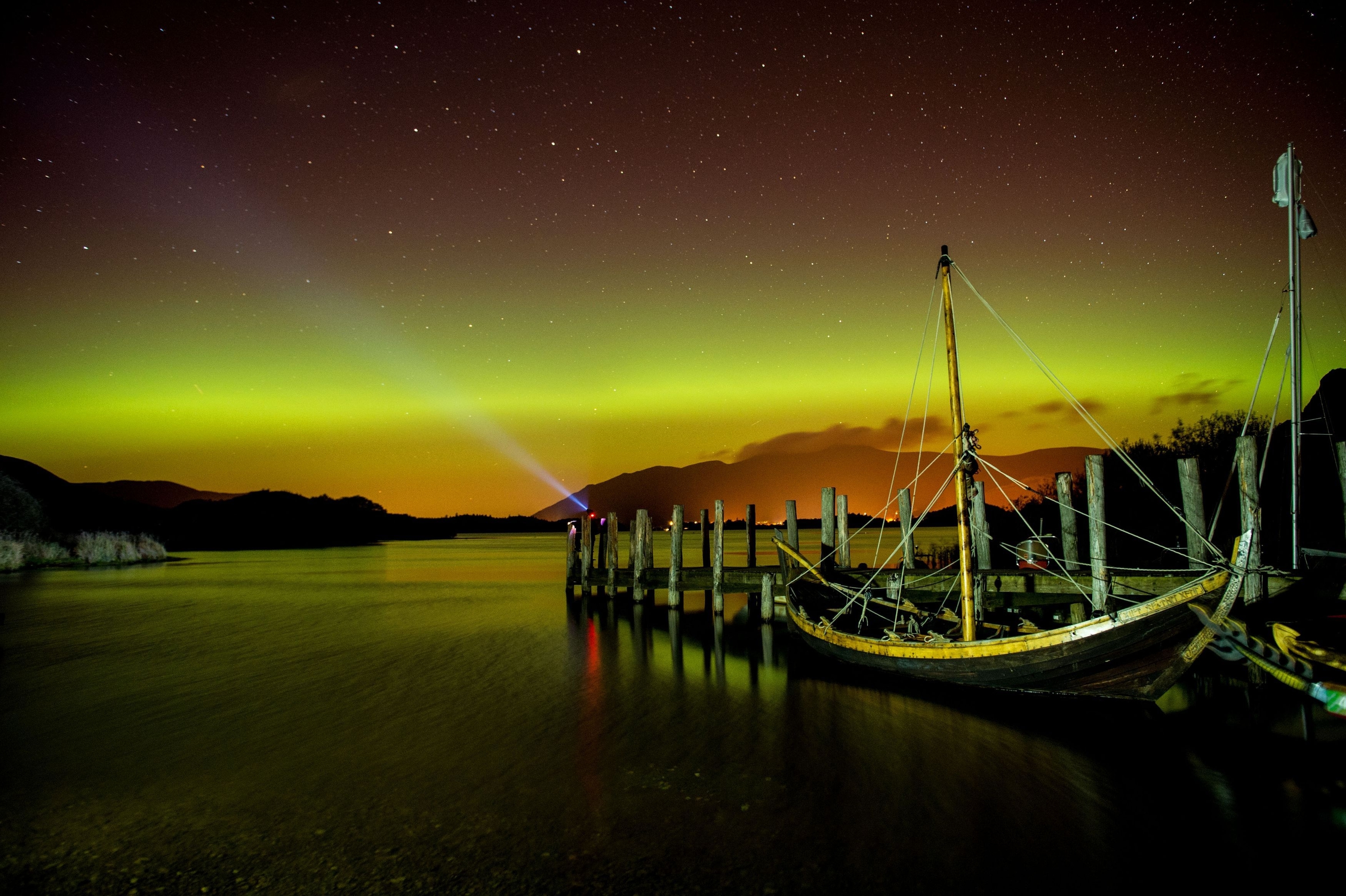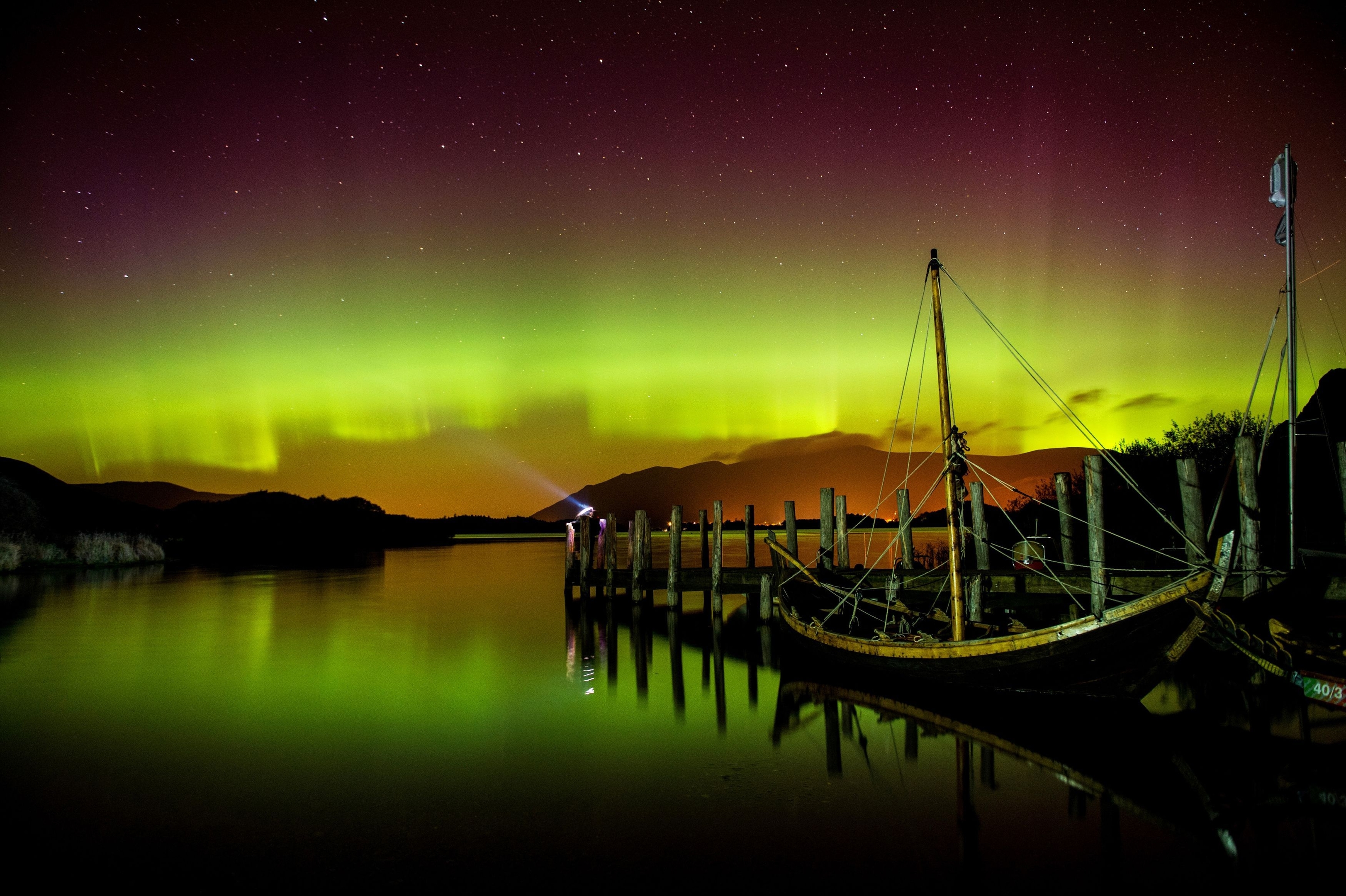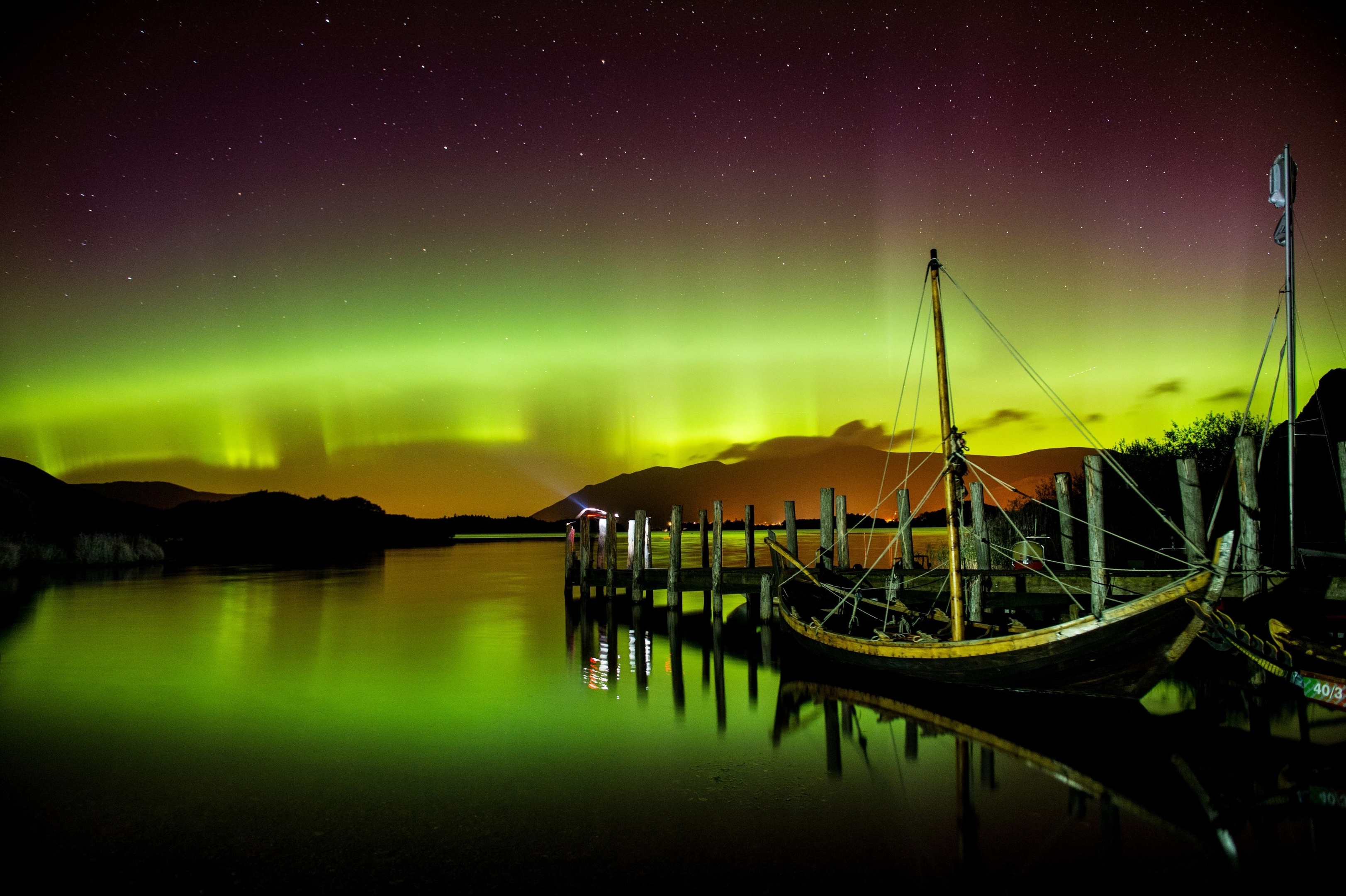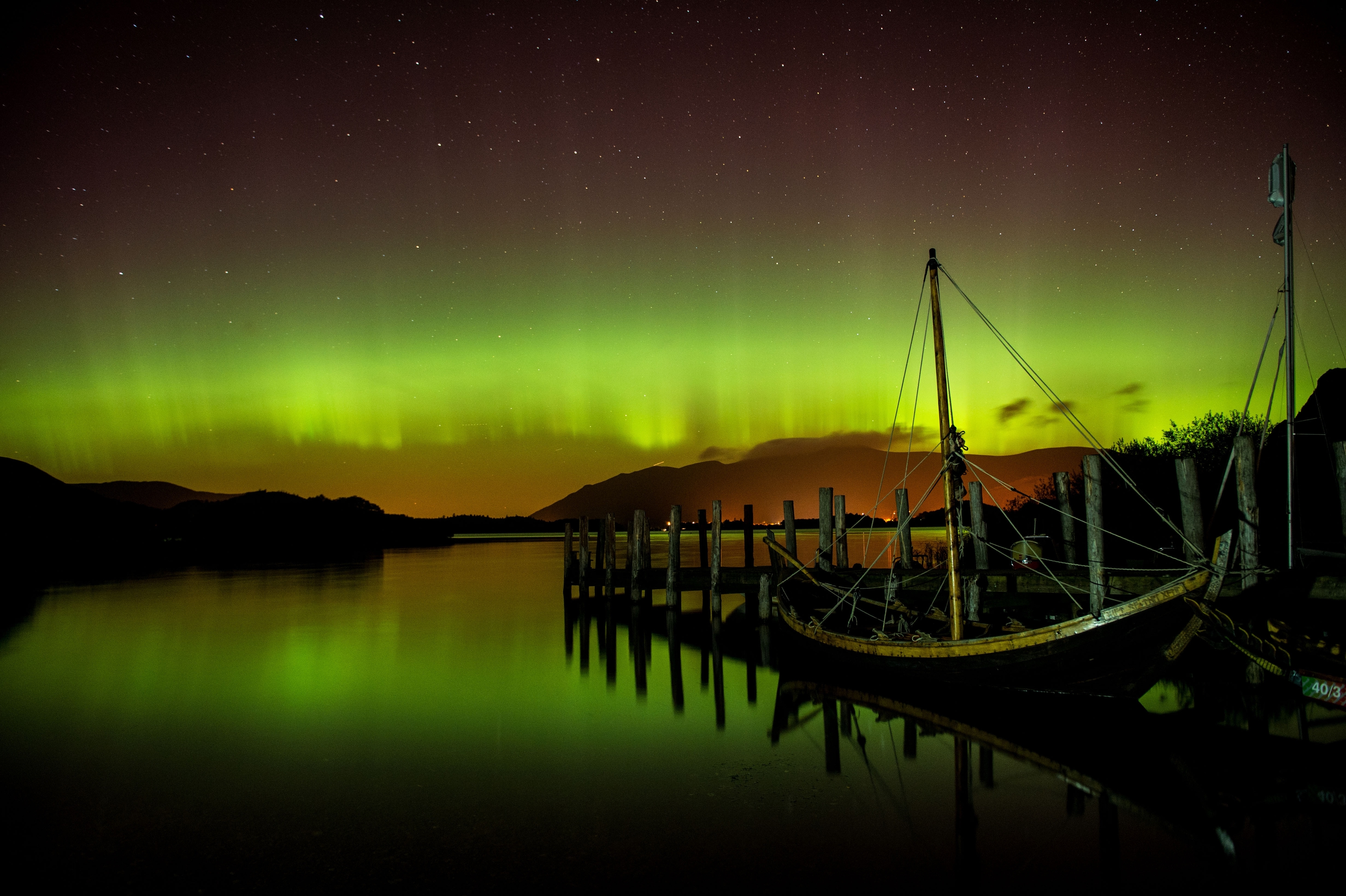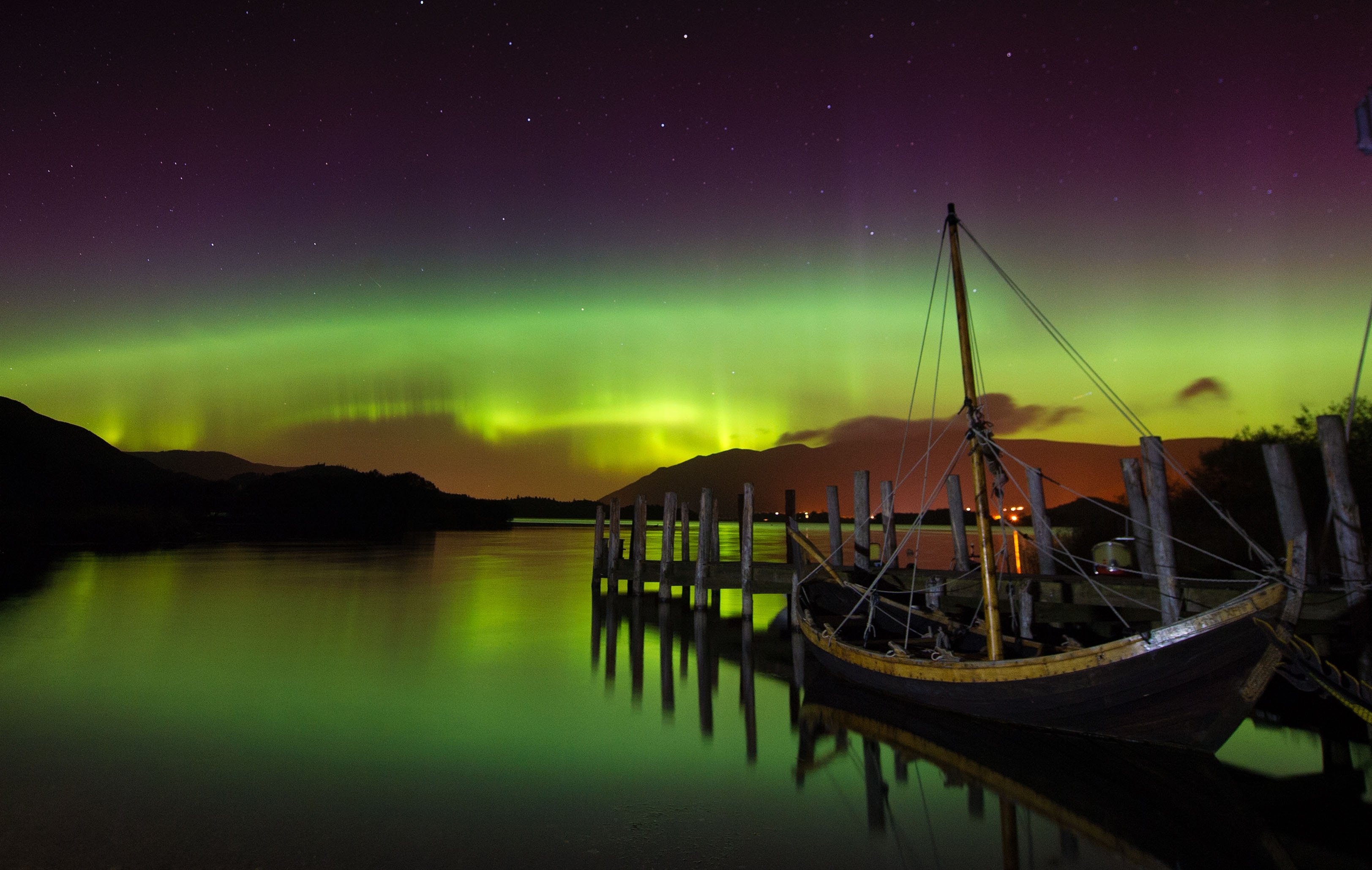Two coinciding space weather patterns have heightened the chance of Northern Lights sightings in the sky above the UK for the next few weeks, according to forecasters.
See our article filled with tips for photographing them.
The Met Office said those in northern England, north Wales, Northern Ireland and Scotland had an increased likelihood of seeing the phenomenon, known as aurora borealis, because of a burst of solar wind.
Over the next few weeks the chance of seeing the #aurora is on the increase http://t.co/CCpQjthVQN pic.twitter.com/AGfmpCoLeR
— Met Office (@metoffice) October 8, 2015
The natural wonder, usually caused by solar particles colliding in the atmosphere, could be seen overnight, with forecasters saying the “disturbance” was strong and the sky mainly clear in northern regions.
The improved chances of a sighting were down to the combined effect of a “coronal hole” near the Sun’s equator, which had aligned with Earth and was sending high-speed solar winds to buffet the planet, and the time of year.
A Met Office spokesman said: “We are now in a period, lasting a few weeks, where these two factors are working together to increase the chances of geomagnetic disturbances, which in turn bring with them the aurora.
The #NorthernLights or #auroraborealis over #Inverness last night. Photo by https://t.co/5mr5Go9EYG #Scotland pic.twitter.com/AFrPes0Ln1
— True Highlands (@TrueHighlands) October 8, 2015
“The strength of the disturbance directly relates to how far south the aurora is visible, or how far north if you are in the southern hemisphere, and of course you need clear skies to see it.
“The season of the year has an influence. The science behind this is not fully understood, but the two equinoctial periods in spring and autumn tend to produce an increase in aurora compared with winter and summer.”
Here’s an incredible selection from Press association photographer Owen Humphreys of last night’s display.
The Northern Lights,
